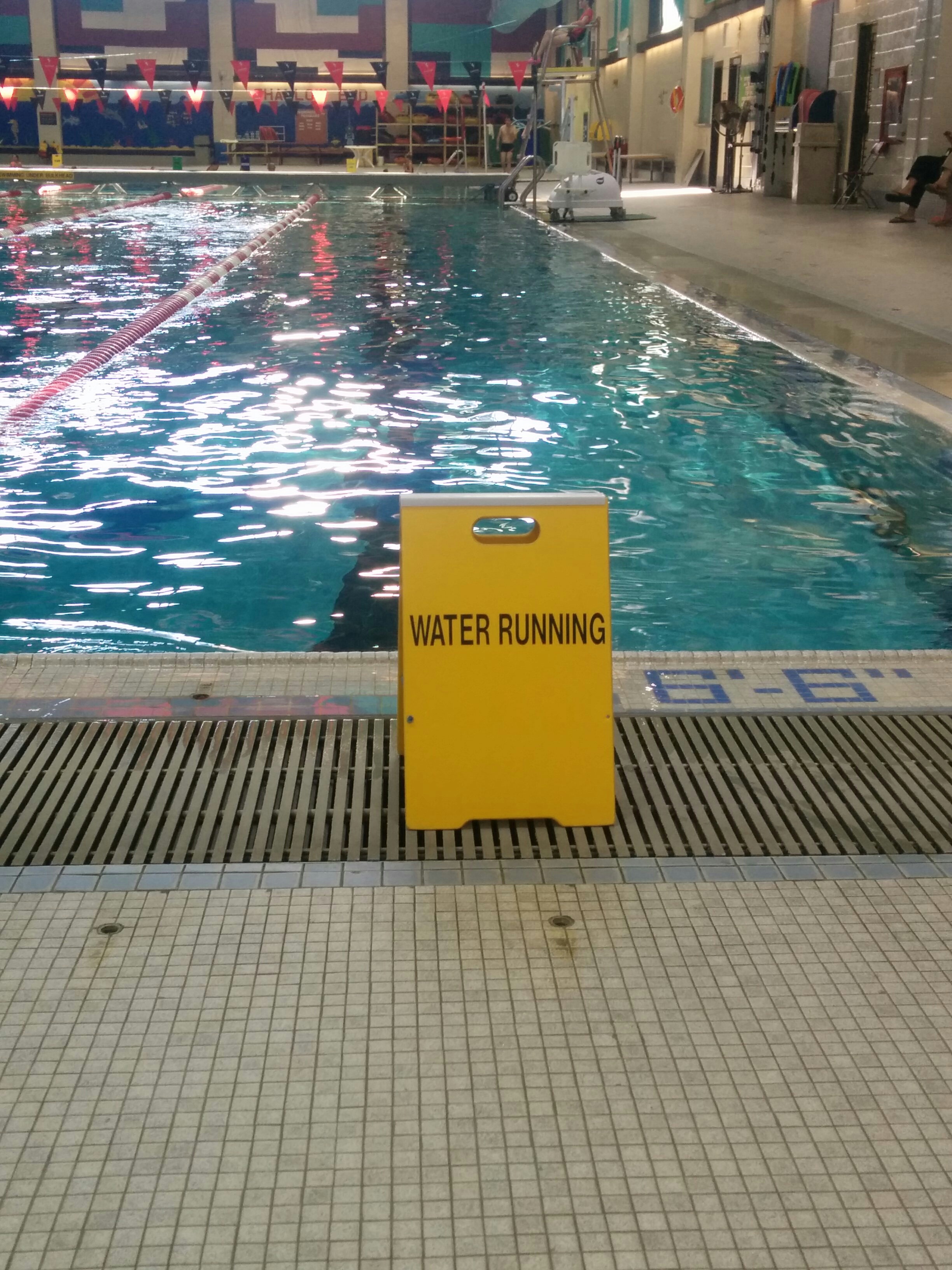After the fast—medium—slow lane series at Carleton’s pool comes a lane unlike the others. Marked by brightly-coloured flotation waist belts, its users engage in what looks like stationary bobbing to the untrained eye. “Water running,” its sign says: a term evoking amusement from casual observers, dread from injured athletes, and sheer misunderstanding from both laypeople and self-professed water runners alike.
After two months spent water running in this lane daily, I can personally attest to the serious confusion surrounding the sport. Lifeguards intervened on my behalf on more than one occasion to establish water running lane etiquette. One elderly woman swimming with a flutter board loudly declared I was ‘doing it wrong’ by not actually running back and forth down the lane.
I suppose you can’t really blame her assumption. How silly it seems to run (in a pool to begin with) on the spot. I smiled and stored up my opinion for this blog post. Because clearly someone’s gotta talk about water running!
Water running (or pool running) is most commonly used by injured runners, since it allows for continued training with relatively no impact on the muscles and joints. Its benefits in cross training and general fitness, however, are highly underrated. Almost anyone can and should give pool running a try.
Pool running takes advantage of water’s buoyancy, while providing the same cardiovascular workout as if you were running on solid ground. It also provides extra resistance because of the water’s viscosity. If done properly, it is an all-around amazing workout.
Here’s how it’s done:
Put on a flotation belt.
At Carleton, these are against the wall, near the pool’s entrance to the women’s showers. Strap it around your waist so the clasp is on your stomach and the flotation against your back. There is a misconception that running without the flotation belt is a better workout. However, the biggest (and perhaps the only) risk for injury while pool running lies in overextending your legs without the belt to force balance, causing your hamstrings to slightly strain. Wearing a flotation belt also allows you to straighten up easier, and to focus on maintaining a high heart rate throughout the “run.”
Get into the deep end!
Unlike on land, covering distance is not the focus of pool running. Just drive your knee up and your opposite foot downwards, switching over and over and over. The movement comes pretty naturally after a few seconds. It will actually feel more like cycling than running or swimming. Just remember to keep your arms bent at 90 degrees and your back straight up.
There are tons of interval pool running workouts online just waiting to be used up to their full potential. They are much more fun than long chunks of continuous pool running, and they help you build up speed.
Try the following links on Eat, Run, Read and Time to Run to start.
Pretty much everyone can gain something from pool running. Why not try it out? Just be confident and don’t get bullied into stretching for distance. Finally, and most importantly, relax and enjoy the confusion of others around you.
See you at the pool!






